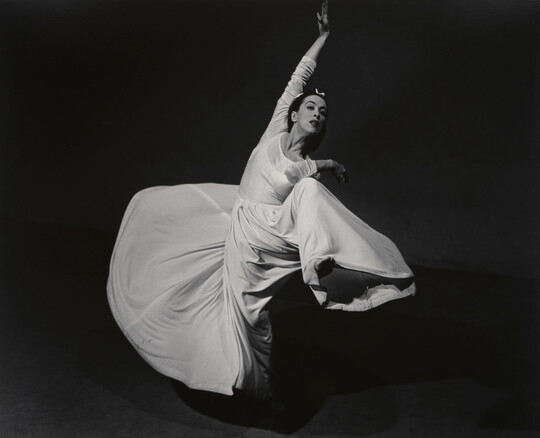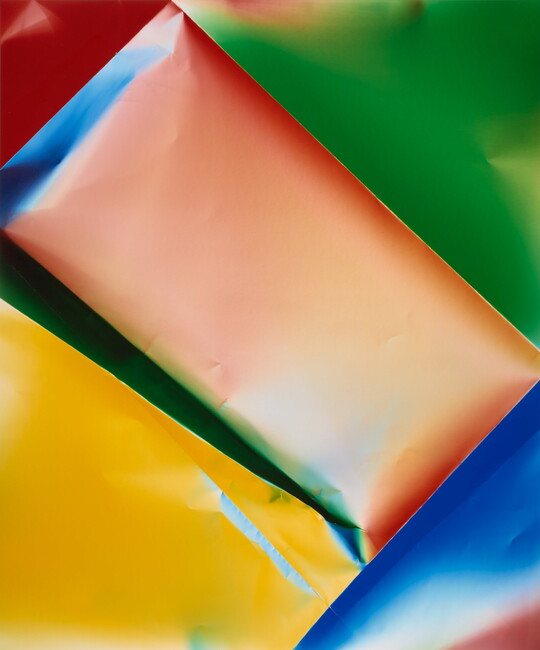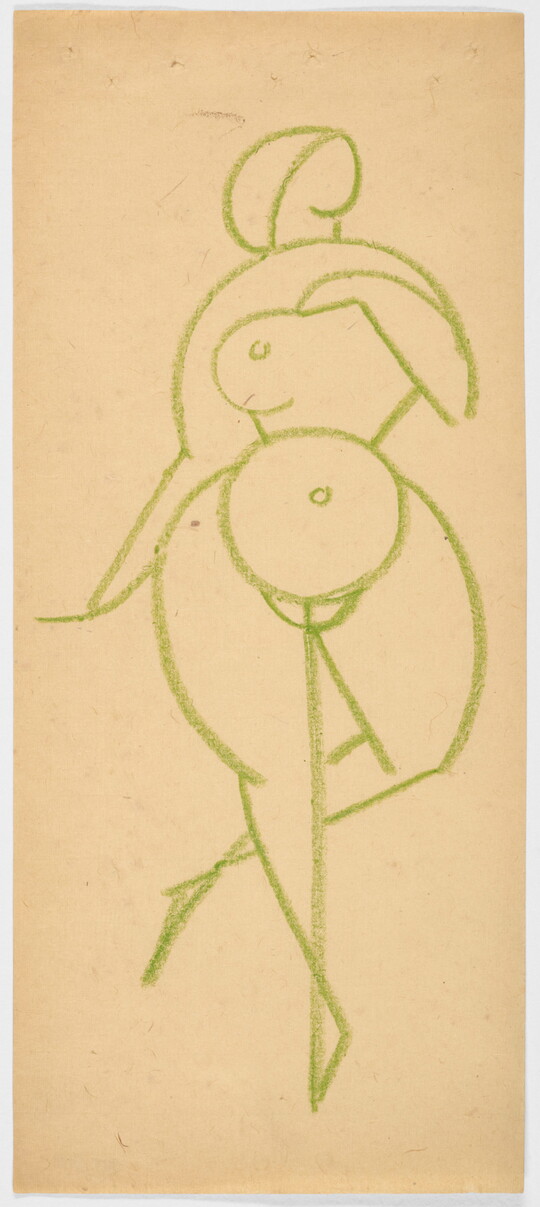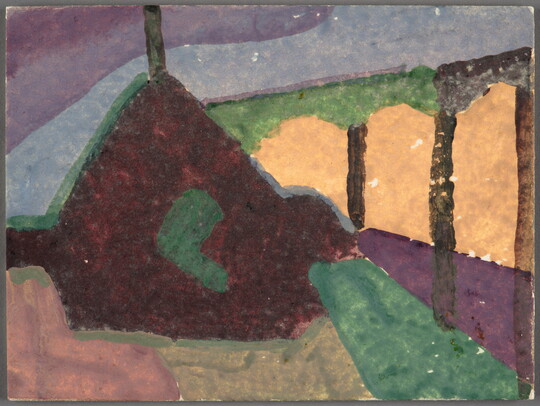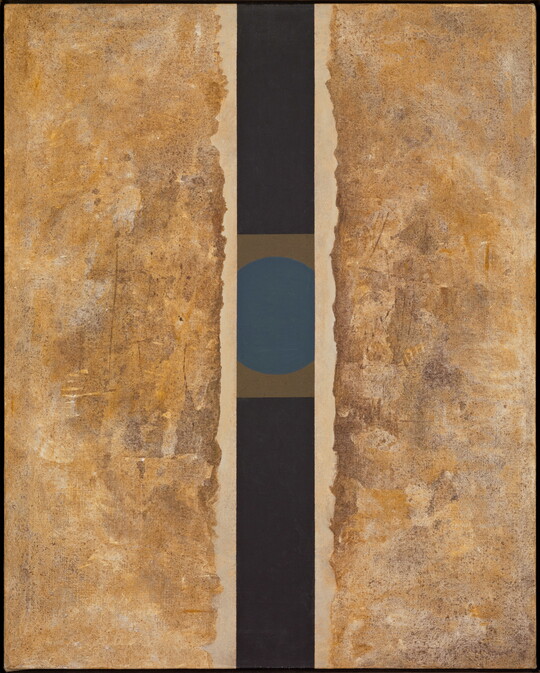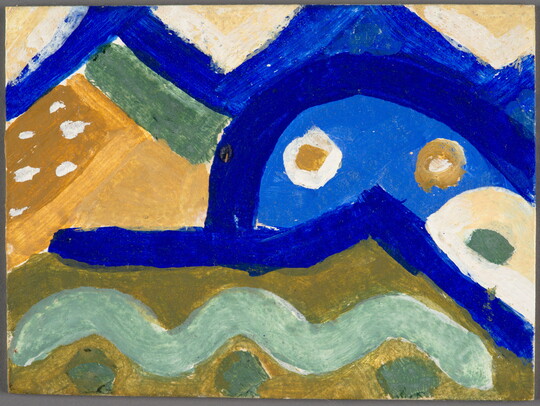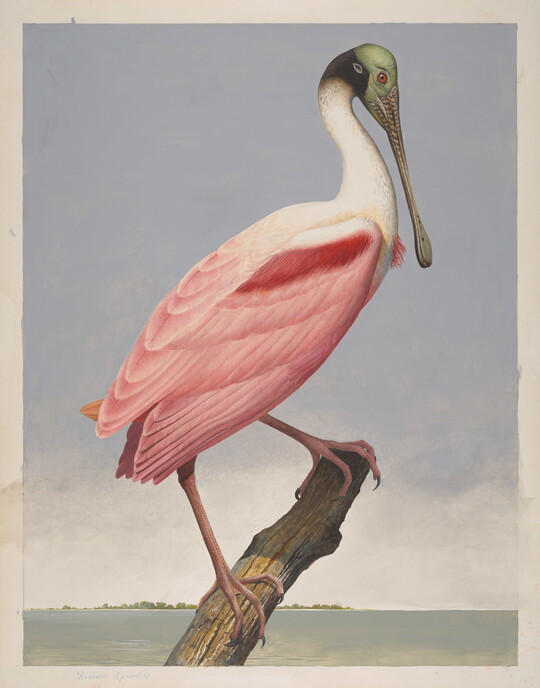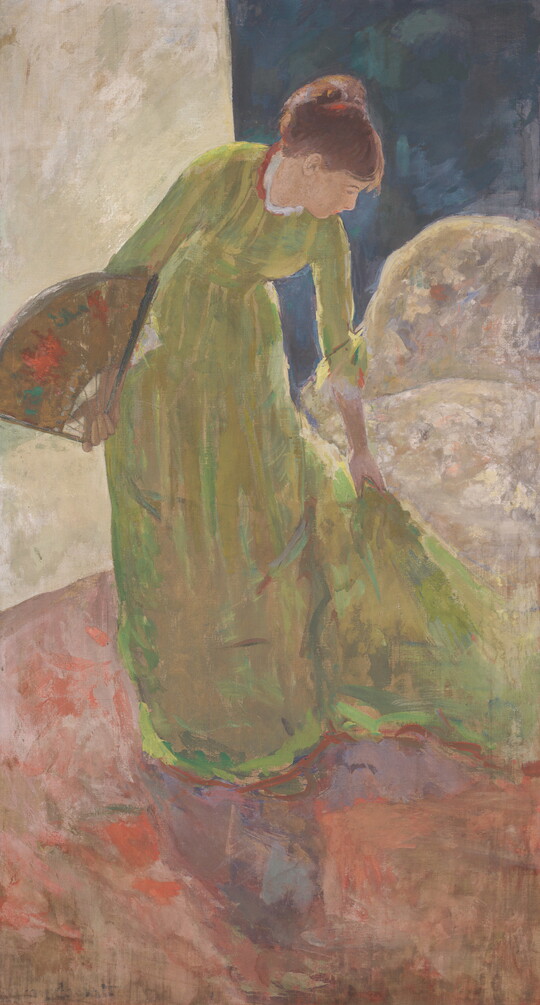

Artwork Image
Photo:
Controls
World's Greatest Comics
Object Details
-
Date
1946
-
Object Type
Paintings
-
Medium
Tempera on panel
-
Dimensions
35 x 48 in.
-
Inscriptions
Recto:
signed and dated l.r.: Ben Shahn ©1946
-
Credit Line
Amon Carter Museum of American Art, Fort Worth, Texas
-
Accession Number
1974.24
-
Copyright
© Estate of Ben Shahn / Licensed by VAGA at Artists Rights Society (ARS), NY
Object Description
Two boys occupy a playground, but instead of running, jumping, or swinging, they read comics. A massive building looms behind them, its stark features contributing an eerie sense of isolation to the scene. Shahn painted World’s Greatest Comics in the aftermath of World War II, and in a 1957 interview he explained that he had been searching in the '40s for a symbolism that would allow him to “formulate the sense of emptiness and waste that the war gave me, and the sense of the littleness of people trying to live on through the enormity of war.”
Alone in this desolate playground, the two boys find an escape in comics, suggesting the resilience of human imagination amid hardship. But at the same time, the boys are isolated from one another. Positioned on opposite sides of the playground, they leave behind a shared reality in favor of their own private imaginings.
—Text taken from the Carter Handbook (2023)
-
We the People: Picturing American IdentityJune 15–September 8, 2013
This exhibition focuses on the fluidity of national identity through the creations of American artists, particularly in key moments in history when the definition of a singular American identity was challenged and ultimately reshaped.
-
From Remington to O’Keeffe: The Carter’s Greatest HitsOctober 6, 2018–March 22, 2019
During the renovation, this exhibition features highlights from the permanent collection, including paintings, photographs, and sculptures, by some of America’s most renowned artists.
Additional details
Location: On view
See more by Ben Shahn
Tags
-
This 35-inch tall by 48-inch-wide painting sits inside a wide, wood frame. This cityscape painting is set in New York City. A dark blue and gray sky hangs over mostly red tenement buildings. The buildings span the entire width of the canvas, having a very flat, lifeless appearance. The artist depicts many individual tenement buildings that are all touching by varying the red and sometimes orange colors of the buildings from one to the next. Gray squares fill the rectangular buildings, indicating windows. The windows reflect the color of the blue-gray color that fills the sky. Nothing can be seen in the windows; they have a glassy, empty feeling.
In front of the red, flat tenement buildings are two playground sets depicted by thin, white lines. The taller set stands in front of the shorter set, and they both span most of the area in front of the buildings. Neither one is being used. Unlike a typical playground, the only apparatuses included are multiple sets of black rings hanging from white lines.
Two children are shown in this artwork. In the middle of the left side stands a young, White boy in front of the red tenement buildings. He has light hair and dark lines for eyes, but most of his facial features are obscured. He is wearing a gray shirt and shorts with gray knee socks and shoes. He is opening a newspaper in his hands; his head looks down to read it. The other child appears in the bottom right corner, kneeling on the gray and white ground composed of many visible brushstrokes. A young, White boy looks down at an open newspaper that shows little, colorful boxes, representing comic strips. He rests on his hands that are placed on the left and right side of his paper. He has brown hair with lighter highlights and wears a green jacket, black shorts, black knee-high socks, and black shoes. Even though the two boys are doing the same activity, they do not acknowledge the other.
The artist signed his name “Ben Shahn” in black in the bottom right corner.
Shahn was an immigrant, coming to the U.S. as a child in 1906 from Lithuania. Many of his artworks, like this painting, reflect some of the isolation and adjustment he might have experienced when settling in in New York City.
-
How can color, line, and shape represent objects?
How might the style, color palette, and composition affect the mood of a work of art?
How has childhood, and the place of childhood in the national imagination, changed throughout time?
How might a work of art reflect an artist’s or a community’s lived experiences?
-
Grades 4–8
After looking closely at the work of art, ask students if this looks like a playground they would want to play on. Have them elaborate on why or why not. As a group, discuss what makes an ideal playground: What types of activities should be available? How much space should it take up? What materials should it be made from? What color scheme should be presented? It is important to have students explain their preferences as there are many possible answers to these questions.
Students will then reimagine the playground in this work of art. Using any media you are exploring with your students, ask students to create an ideal playground for the children in this scene.
Grades 9–12
Students will consider the types of activities they did as a younger child or they do currently that are introspective (reading, listening to music on headphones, doodling, etc.). Using the media of their choice, students will create an artwork depicting a moment of introspection.
Share Educator Resources
Amon Carter Disclaimer
This information is published from the Carter's collection database. Updates and additions based on research and imaging activities are ongoing. The images, titles, and inscriptions are products of their time and are presented here as documentation, not as a reflection of the Carter’s values. If you have corrections or additional information about this object please email us to help us improve our records.
Every effort has been made to accurately determine the rights status of works and their images. Please email us if you have further information on the rights status of a work contrary or in addition to the information in our records.
Related Works
-
Martha Graham - Letter to the World (Swirl), 1940
Barbara Morgan
Gelatin silver print
P1974.21.17
-
Zerogram, 2017
Ellen Carey
Dye coupler print
P2018.40
-
Green Nude, ca. 1920
Gaston Lachaise
Crayon on paper
2018.4
-
Untitled, ca. 1940-1943
Arthur Dove
Mixed media
1987.69
-
Metaphor, 1963
Clinton Adams
Acrylic on canvas
1974.54
-
Untitled, ca. 1940-1943
Arthur Dove
Mixed media
1987.66
-
Roseate Spoonbill, ca. 1980-85
Scott Gentling, Stuart Gentling
Graphite, opaque and transparent watercolor on paper
2018.26
-
Amon G. Carter, 2008
Scott Gentling
Acrylic on canvas
2008.14
-
Woman Standing, Holding a Fan, 1878-1879
Mary S. Cassatt
Distemper with metallic paint on canvas
2011.20





